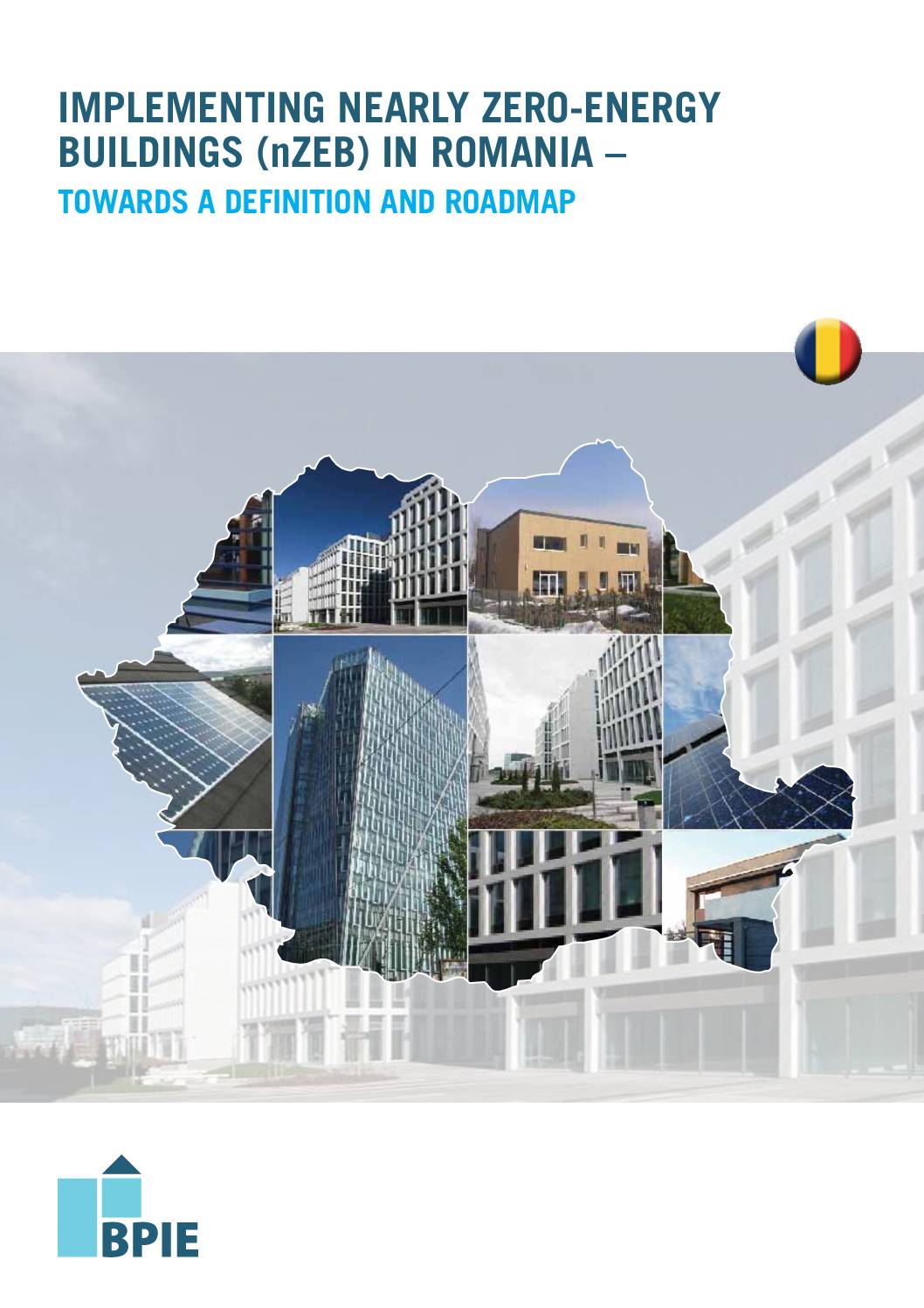The recast of the Energy Performance of Buildings Directive (EPBD) introduced, in Article 9, “nearly ZeroEnergy Buildings” (nZEBs) as a future requirement to be implemented from 2019 onwards for public buildings and from 2021 onwards for all new buildings. The EPBD defines a nearly Zero-Energy Building as follows: [A nearly Zero-Energy Building is a] “building that has a very high energy performance… [ ]. The nearly zero or very low amount of energy required should to a very significant extent be covered by energy from renewable sources, including renewable energy produced on-site or nearby”.
Acknowledging the variety in building culture, climate and methodological approaches throughout the EU, the EPBD does not prescribe a uniform approach for implementing nearly Zero-Energy Buildings (nZEBs) and each EU Member State has to elaborate its own nZEB definition. The EPBD also requires EU Member States to draw up specifically designed national plans for implementing nZEBs which reflect national, regional or local conditions. The national plans will have to translate the concept of nearly ZeroEnergy Building into practical and applicable measures and definitions to steadily increase the number of nearly Zero-Energy Buildings. EU Member States are required to present their nZEB definition and roadmaps to the European Commission by 2013.
So far the nZEB criteria as defined in the EPBD are of a very qualitative nature with much room left for interpretation and way of execution. Indeed, there is little guidance for Member States on how to concretely implement the Directive and on how to define and realise nearly Zero-Energy Buildings. Therefore a more concrete and clear definition of nZEB needs to be formulated which includes common principles and methods that can be taken into account by EU Member States for elaborating effective, practical and well thought-out nearly Zero-Energy Buildings.
The aim of this study is to actively support this elaboration process in Romania by providing a technical and economic analysis for developing an ambitious yet affordable nZEB definition and implementation plan. Starting from country data on current construction practices, economic situation conditions and existing policies, different technological options are simulated for improving the energy performance of offices and single- and multi-family buildings. We have evaluated the economic implications of the various options and offer recommendations for an implementation plan.
Share this

Sectors: Buildings, Cross cutting, Finance, Industry, Power sector
Country / Region: Europe, Romania
Tags: building types, energy, renewable energies, sustainable livelihoods approachesIn 1 user collection: Building Efficiency Accelerator: Tools and Case Studies Collection
Knowledge Object: Publication / Report
Published by: Buildings Performance Institute Europe
Publishing year: 2012
Author: Buildings Performance Institute Europe
